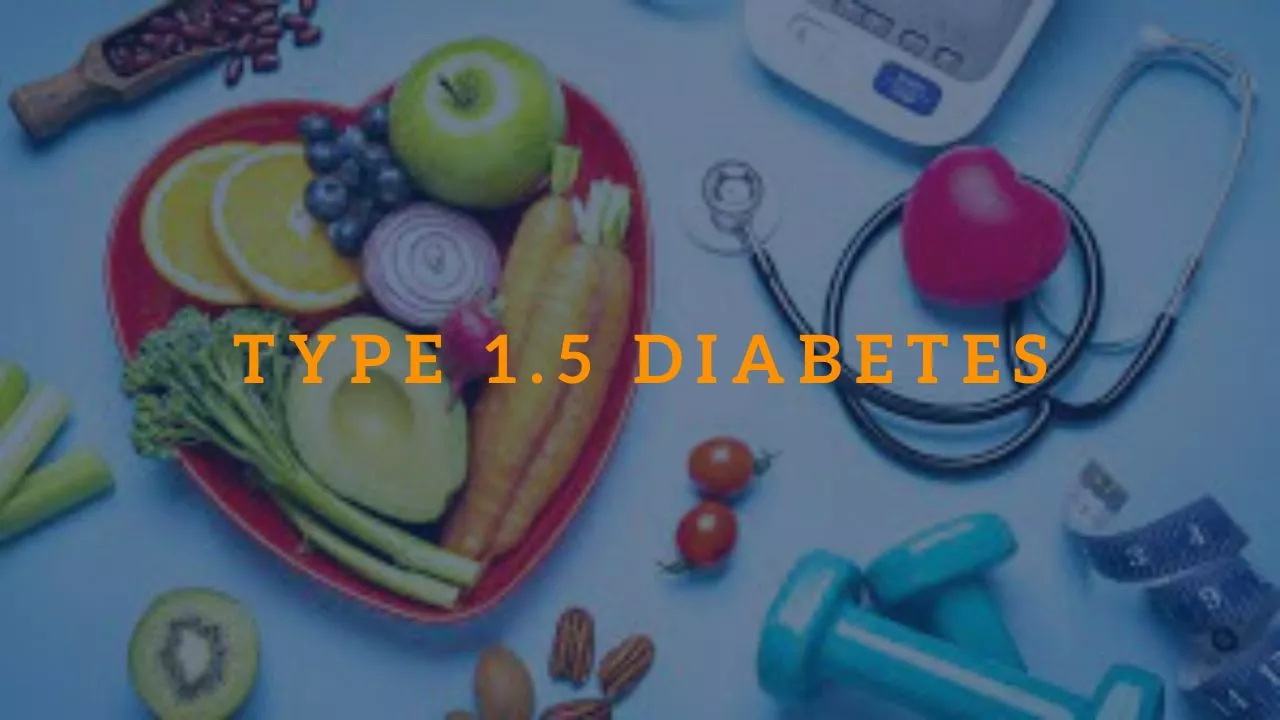Hello 1-GSM Visitors! If you’re here, you’re probably looking for information about type 1.5 diabetes. It’s a relatively new term in the diabetes world, and the information out there can be confusing. In this article, we’ll break down what type 1.5 diabetes is, how it differs from type 1 and type 2 diabetes, and how it’s treated.

What is Type 1.5 Diabetes?
Type 1.5 diabetes, also known as Latent Autoimmune Diabetes in Adults (LADA), is a form of diabetes that shares characteristics of both type 1 and type 2 diabetes. It’s often misdiagnosed as type 2 diabetes because it typically develops in adults over the age of 30 and progresses slowly, but it’s actually an autoimmune disorder like type 1 diabetes.
In people with type 1.5 diabetes, the immune system attacks and destroys the insulin-producing cells in the pancreas, just like in type 1 diabetes. However, the onset of symptoms is usually slower and less severe than in type 1 diabetes. People with type 1.5 diabetes may still produce some insulin, but not enough to regulate their blood sugar levels.
How Does Type 1.5 Diabetes Differ from Type 1 and Type 2 Diabetes?
Type 1 diabetes is an autoimmune disorder that usually develops in childhood or adolescence. People with type 1 diabetes require insulin injections to survive because their bodies don’t produce any insulin. Type 2 diabetes is a metabolic disorder that usually develops in adulthood and is often related to lifestyle factors like diet and exercise. People with type 2 diabetes may be able to manage their blood sugar levels with diet and exercise or oral medications, but some also require insulin injections.
Type 1.5 diabetes shares characteristics of both type 1 and type 2 diabetes. Like type 1 diabetes, it’s an autoimmune disorder that affects the insulin-producing cells in the pancreas. However, like type 2 diabetes, it typically develops in adulthood and progresses slowly. People with type 1.5 diabetes may be able to manage their blood sugar levels with oral medications or diet and exercise for a while, but eventually they will likely require insulin injections.
How is Type 1.5 Diabetes Treated?
The treatment for type 1.5 diabetes is similar to the treatment for type 1 diabetes. People with type 1.5 diabetes require insulin injections to regulate their blood sugar levels. However, because the onset of symptoms is slower and less severe than in type 1 diabetes, people with type 1.5 diabetes may be able to manage their blood sugar levels with oral medications or diet and exercise for a while before needing insulin injections.
It’s important for people with type 1.5 diabetes to work closely with their healthcare team to develop a treatment plan that works for them. This may include regular blood sugar monitoring, insulin injections, oral medications, and lifestyle changes like diet and exercise.
What are the Symptoms of Type 1.5 Diabetes?
The symptoms of type 1.5 diabetes are similar to the symptoms of type 1 and type 2 diabetes. They may include:
- Increased thirst and urination
- Blurred vision
- Fatigue
- Weight loss
- Slow-healing cuts or sores
Because the onset of symptoms is slower and less severe than in type 1 diabetes, people with type 1.5 diabetes may not realize they have the condition for several years. This can lead to misdiagnosis and delayed treatment.
Who is at Risk for Type 1.5 Diabetes?
People who are at risk for type 1.5 diabetes include:
- Adults over the age of 30
- People with a family history of type 1 diabetes or autoimmune disorders
- People who are overweight or obese
- People who have high blood pressure or high cholesterol
If you’re at risk for type 1.5 diabetes, it’s important to talk to your healthcare provider about getting tested.
How is Type 1.5 Diabetes Diagnosed?
Type 1.5 diabetes is diagnosed through a combination of blood tests and clinical symptoms. Your healthcare provider may test your blood sugar levels, A1C levels (a measure of average blood sugar levels over the past three months), and antibodies to insulin-producing cells in the pancreas.
If you’re diagnosed with type 1.5 diabetes, it’s important to work closely with your healthcare team to develop a treatment plan that works for you.
Take Control of Your Health
Type 1.5 diabetes can be a confusing and challenging condition to manage, but with the right treatment plan and support, it’s possible to live a healthy and fulfilling life. If you think you may be at risk for type 1.5 diabetes, talk to your healthcare provider about getting tested. And if you’ve already been diagnosed with type 1.5 diabetes, remember that you’re not alone. There are many resources available to help you manage your condition and take control of your health.
Conclusion
Type 1.5 diabetes, also known as LADA, is a form of diabetes that shares characteristics of both type 1 and type 2 diabetes. It’s often misdiagnosed as type 2 diabetes because it typically develops in adults over the age of 30 and progresses slowly, but it’s actually an autoimmune disorder like type 1 diabetes. The treatment for type 1.5 diabetes is similar to the treatment for type 1 diabetes, and people with type 1.5 diabetes require insulin injections to regulate their blood sugar levels. If you think you may be at risk for type 1.5 diabetes, talk to your healthcare provider about getting tested.
See you again at our other interesting article!
